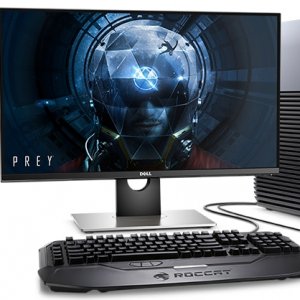In my last post,
“Mining for Digital Gold,” I gave a brief primer on the concept of digital mining and Bitcoins, and talked about the quickly growing digital community of Bitcoin entrepreneurs who are building supercomputers to mine Bitcoin information from around the web and make a profit from it.
There is a lot of controversy about whether Bitcoin mining is a legitimate and profitable endeavor. I interviewed Jeff Ownby, VP Marketing at
Butterfly Labs, a manufacturer of high-speed encryption processors for use in Bitcoin mining, research, telecommunication and security applications. While Butterfly Labs hasn’t yet shipped the products currently listed on their site, they have many existing customers from previous models.
I’ve also came across rumors of BitCoin’s being yesterdays news, and for new miners to consider other currencies, like LiteCoin. I interviewed a Bitcoin miner who asked me to keep his identity anonymous.
For rumors of cash grab schemes around Butterly Labs — for the record, I believe them to be a legitimate organization from my conversations with them, and feel that the frustration out there is simply attributed to the wait customers are enduring for a product they desperately want to get their hands on. Also, for the record, I placed an order for the entry level 5000/Mh Butterfly Labs machine, paid about $350 for it, and am hoping to receive it in July or August.
Jeff Ownby, VP Marketing at Butterfly Labs
Jesse: Tell me what someone is getting when they order a machine from you.
Jeff: Users who invest in Bitcoin-mining machines like ours are investing in processing power to mine Bitcoins with. Bitcoin mining requires special processing power. After a Butterfly Labs machine is connected to a user pool, it starts processing data. The rate at which our special chips and programs process data is what gives them value to the customer. Our machines are specifically designed from the ground up to mine Bitcoins and do nothing else.
Jesse: How did Butterfly Labs start?
Jeff: Butterfly Labs started out developing systems for banks in about 2010. We were interested in building clustered supercomputer systems they could use to run trading algorithms against simulated data (in order to avoid using live data). In 2011, we realized we could reprogram our existing chips for Bitcoin mining. We started by sourcing chips and then using FPGA chips (Field Programmable Gate Array Chips) that have be repurposed to do Bitcoin mining, so our engineering team reprogrammed the chips. The chips coming out now are custom hand-routed Bitcoining chips. The old model was 832mh/sec. The lowest now is 5000/mh.
(Jesse’s note to reader: a Mega-Hash (mh) is the rate at which problems can be solved. The more mh you solve, the more Bitcoins you get. )
Jesse: Why use a Butterfly Labs machine versus building your own?
Jeff: There really isn’t any application that offers a comparable calculation. Graphics cards can be strung together to increase the speed, but It would take many cards to get up to the hashing speed we have. Most GPU rigs out there are processing between 1000 and 2000/mh, while our entry level is 5000/mh, and ranges to 25000/mh.
Anonymous Bitcoin and Litecoin Miner
Jesse: What mining rig do you own and how much did you pay to make it? Hash rate? Pool? Earnings so far?
Anonymous Miner: I started back in 2010 with 1x 5870. Currently I have 4 hosts, 3x 7970s each. In total I’ve spent about $12,000 for hardware, which easily paid for itself. Plus I still have about 1200 Bitcoin saved in my wallet (about $170,000, at the moment). I am mining Litecoins now, since it’s way more profitable. On
coinotron.com with about 8500kH/s.
Jesse: Do you have any other advice for new miners?
Anonymous Miner: My advice is to do your math! Mining Bitcoins has become an arms race against time. (Well, it always was, but now the big guys are in, with the big guns.)
Butterfly Labs might promise to deliver in two weeks (“two weeks” is their standard reply), but if you (pre)order now it might be end of 2013 til you get your hardware. Because of companies like Avalon (they plan to throw hundreds of thousands of ASIC chips on the market around August 2013 and have already sold 490,000 by now), the difficulty will be sky high by then. In my opinion, Latecomers won’t even make their investment back, not to mention making any profit.
The Bitcoin train has left the station. My suggestion is to focus on Litecoin. MtGox already made an official announcement that Litecoin will be added ASAP and you can expect a jump in prices for Litecoin (and a drop for Bitcoin) once that happens.
. . . . . . . . . .
The various models for sale by Butterfly Labs are all in pre-order status and are highly anticipated by many customers who have already paid and are awaiting shipments. Prices start at approximately $350 ( including shipping ) for a 5000/mh machine, and range up to $2,500 for a 25000/mh machine. There is no savings in hash rate as the price increases; it’s just a matter of how much you believe in the market and how big a miner you want to be. Machines ordered today are expected to ship in late July. Delivery dates are not guaranteed, but Butterfly Labs has assured me that they will offer refunds to orders that have not yet shipped.
I believe this new digital currency is a high risk investment, but if played correctly, it’s a valuable and progressive new business opportunity for forward-thinking techies. There’s no telling where this fledgling industry will go or what Bitcoins will be worth a year from today, but if the Bitcoin economy keeps going up, it wouldn’t be a bad idea to get yourself a rig, plug it in, and mine yourself some digital gold. As
weusecoins.com puts it: “Bitcoin is going to be the biggest opportunity for innovation that the world has seen since the industrial revolution. An idea whose time has come.”
But make no mistake, this is no different than any other high-tech stock. It’s risky, it’s volatile, and you should not invest any more than you are prepared to forfeit all together.









